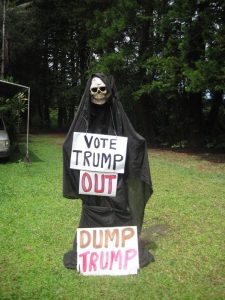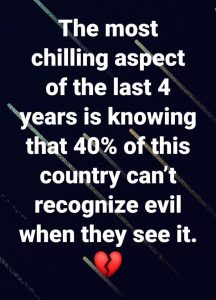The U.S. Army’s Pohakuloa Training Area sits high up in the “saddle” between Mauna Loa and Mauna Kea on the Big Island. At just over 6,000 feet above sea level, it’s a vast and rugged stretch of land, filled with black and red lava rock.
When a 155mm round hits the base of Mauna Loa in the distance it takes almost a minute for the sound to reach the gun line.
The Army has a 65-year lease to train in nearly 23,000 acres of state land that it obtained for $1 in 1964. The lease expires in 2029, so the Army is preparing an environmental impact statement to assess the ecological, cultural and economic impacts of continued training as it seeks a renewal.
Part of that process includes a public comment period, which ends Oct. 14, for citizens, elected officials and organizations to submit concerns.
Last week Marine and Army artillery units trained together there, practicing coordinating their operations as they prepare for possible conflicts in the Indo-Pacific.
“We understand that this is a unique place for us that, you know, offers us a lot of training opportunities that we don’t get elsewhere,” said Army Maj. Ed Guelfi, executive officer of the 25th Infantry Division Artillery. “We want to make sure that those opportunities continue.”

U.S. Army personnel from the 3rd Battalion, 7th Field artillery (3-7) fire a M777 Lightweight Towed Howitzer during training last week at Pohakuloa Training Area on Hawaii island.
Cory Lum/Civil Beat
The terms of the Army’s lease with Hawaii say the military must “make every reasonable effort to … remove or deactivate all live or blank ammunition upon completion of a training exercise.” Disagreement over what constitutes a “reasonable effort” has been at the center of bitter debate for years.
Lanakila Mangauil, a prominent activist turned candidate running for the Office of Hawaiian Affairs, was born and raised on Hawaii island. He said the training area is a constant reminder of war.
“Our houses rumble,” he said. “I think it’s a crime straight up that they’ve had access to this land for so long and they’ve only contaminated this environment.”
High Stakes Training
The remoteness of the training ground makes it an attractive venue for both the military and government agencies.
Staff Sgt. Kevin Antolin, a soldier born and raised on the island, noted that local police and fire departments also use it for tactical training and simulated fires.
“Over here is the only actual places where they can have open flames that they can really simulate a burning building (safely),” he said.
But live fire military training gets the most attention. Commanders like the site because the vast landscape allows them to practice firing at incredibly long ranges and to use their heaviest munitions.
In the post-9/11 era the U.S. military mostly focused on what it calls “low intensity conflict” against insurgent and terrorist groups. Troops were encouraged to use less artillery in an effort to reduce civilian casualties in pursuit of winning over local people — with sometimes mixed results.
But as the U.S. found itself ensnared in drawn out counterinsurgency campaigns, other countries invested heavily in artillery. Increasingly, American troops now train for combat against “near peer adversaries”– notably China, North Korea and Russia.

A soldier from the 3rd Battalion, 7th Field artillery (3-7) prepares a 155mm round to be fired from a M777 Lightweight Towed Howizter during training at Pohakuloa Training Area.
Cory Lum/Civil Beat
An armed force doesn’t need to be a superpower for artillery to play a decisive role in battle. In 2014 ISIS militants used artillery and tanks captured from the Syrian and Iraqi armies to take over most of Eastern Syria and Western Iraq.
Artillery also played a central role in driving ISIS out. During the battle for the city of Raqqa in Syria, a single U.S. Marine battalion supporting Kurdish-led rebels fired more artillery rounds than the entire Army and Marines did during all of Operation Desert Storm.
Hawaii-based artilleryman Sgt. Dylan Porter, who fought against ISIS in Iraq, said that getting into the field to train is critical.
“When you’re doing the real thing that’s when lives are on the line,” he said.
Unique Location
China and Taiwan have both invested heavily in long range artillery as tensions escalate in the South China Sea.
North Korea has spent decades zeroing its artillery at both military bases and major cities along its border including South Korea’s capital Seoul. Analysts believe that if North Korean artillery unleashed its full strength it could kill up to 200,000 people in an hour.
Those are among the flashpoints the military in Hawaii are most focused on training for. “Here in the Pacific, we’re projecting power, it’s why we’re here,” said Guelfi. “And we understand that we play a critical role inside of that larger strategic kind of context.”
Pohakuloa has also been used by foreign militaries during RIMPAC and other exercises as their troops train with the U.S. military, particularly regional countries with concerns about the Chinese military’s increasingly aggressive posture.
But Mangauil argues that American and allied militaries training at Pohakuloa harms the environment and endangers local communities.
“The military’s presence in Hawaii puts us as a primary target. And this base has been a long time scourge to our community,” he said. “They treat Hawaii as the biggest turret gun in the Pacific. You know, ‘whoever controls Hawaii controls the Pacific’ is their attitude.”
Mangauil notes that Pohakuloa’s location makes it home to a unique ecosystem.
“Being between the two mountains and not by any other inhabited areas, you still have a lot of very endangered species, animals, plants, insects within that area,” he said.
In 1993 a report by Army auditors found that while planning the construction of a new training complex at Pohakuloa officials cut corners during the survey, ignoring the recommendations of Army engineers that called for a comprehensive botanical study of the proposed site.

U.S. Army personnel from the 3rd Battalion, 7th Field artillery (3-7) tighten fuzes on the tips of 155mm projectiles that will be loaded into the M777 Lightweight Towed Howizter during training at Pohakuloa.
Cory Lum/Civil Beat
Kalani Flores, a Hawaiian activist and professor at Hawaii Community College, said that the Army has also never done a comprehensive survey of cultural sites across the vast training area, including the “impact zone” where most munitions land.
Flores argues the military has had a “piecemeal” approach to assessing its impact on the land by focusing on individual projects rather than the broad scope of its operations.
In 2018 a Hawaii judge ruled against the state in a lawsuit filed by the Native Hawaiian Legal Corporation on behalf of Native Hawaiian cultural practitioners Clarence “Ku” Ching and Mary Maxine Kahaulelio, finding state officials had failed to ensure the military upheld its duties to clean up the range and harmed Hawaiian cultural interests.
But the military itself was not party to the lawsuit.
“We stand by our record of cleaning as we go, and cleaning up after others,” said Michael O’Malley, an Army spokesman at Pohakuloa. He notes that the military cleans up not just its own equipment but regularly also clears discarded trash on Pohakuloa’s fence line left by passing motorists.
He also noted that the onsite recycling center has a diversion rate of 62%, sending less than half of what it collects to a landfill.
But he acknowledges that the military doesn’t clean up the “impact area” as it’s an active range, and that the continuous training over the years makes it unsafe to enter.
Further Study
“The bombing and training at Pohakuloa is not much different than what was happening on the island of Kahoolawe,” said Flores.
Persistent protests and lobbying brought an end to the Navy’s use of that small island in the 1990s. Despite the efforts to dispose of unexploded ordnance on the island, untold numbers remain. When wildfires ravaged the island in February, firefighters pulled back for fear of unexploded bombs.
Researchers have documented cultural sites in the Big Island training area. Flores says that there may be archaeological sites in Pohakuloa’s impact zone that will be lost forever.
“In the end, just like Kahoolowe, the military would never be able to clean up the place, if they ever ended training up there,” he said.
A particular point of controversy has been the use of depleted uranium rounds, though the Army stopped using them at Pohakuloa in 1996. Mangauil said the ongoing training threatens the island’s groundwater, arguing the site is “one of the largest spaces that even our ancestors knew was a collector for water.”
He said any type of heavy metals, especially explosives, “can damage the topography and ultimately contaminate that water source.”
He noted that a 2015 study by University of Hawaii geologists found reserves of water under Pohakuloa and that there’s likely more. He added that there’s never been a full hydrological study of the area.

Smoke and dust from the explosions of 155mm projectiles along the Pohakuloa side of Mauna Loa as Army and Marine Corps troops practice firing artillery during joint training.
Cory Lum/Civil Beat
UH Manoa geologist Donald Thomas oversaw the 2015 study. He said so far, researchers have found no evidence of manmade contamination of water and that “samples that we did collect we did analyze for uranium ions in the water, and it was below our detection limits.”
Thomas said they’ve only tested a small portion of the area so far though and intend on further studies.
The Army has cooperated with the water studies, providing funding for UH researchers. However that’s partly for its own operational reasons — the military hopes to tap into water reserves beneath to save money it spends hauling water up to Pohakuloa for troops training in the field.
“It’s an ongoing effort. We’ve been training here for 60 years. We have a responsibility to clean as we go. And that’s what we do because it’s the right thing to do.” O’Malley said. “And we’re going to continue to train.”

